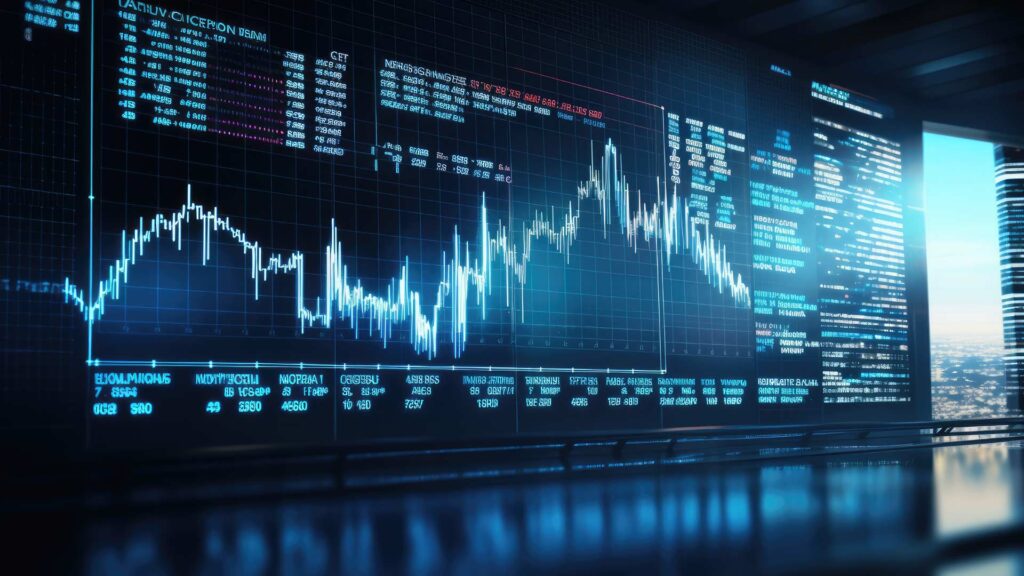In the ever-evolving world of high-frequency trading (HFT), a seismic shift is underway. Quantum Vault Technologies (QVT) is at the forefront of this revolution, leveraging cutting-edge technology to transform millisecond trading into nanosecond precision. This leap forward isn’t just about speed – it’s about the fusion of unprecedented computational power with artificial intelligence, creating a new paradigm in financial markets.
From Milliseconds to Nanoseconds: The New Frontier
Traditional HFT operates in the realm of milliseconds, where a single millisecond can mean the difference between profit and loss. However, QVT has shattered this barrier, entering the world of nanosecond trading. This thousand-fold improvement in speed is not just an incremental change; it’s a fundamental reimagining of what’s possible in financial markets.
The Secret Sauce: NVIDIA’s Blackwell GPUs
At the heart of QVT’s technological leap is NVIDIA’s latest Blackwell GPU architecture. These aren’t your standard graphics processors; they represent a quantum leap in computational power. For the first time, the CPU and GPU are effectively “glued” together, creating what we call “instant response time.”
Key features of the Blackwell GPUs include:
- Over 200 billion transistors
- Up to 1,000 TFLOPS of FP8 performance
- Memory bandwidth exceeding 8 TB/s
- Advanced 4nm process technology for superior energy efficiency
This unprecedented power allows QVT to process market data and execute trades at speeds previously thought impossible.
LLMs and Self-Learning Algorithms: The AI Revolution
QVT’s trading algorithms are not static; they’re living, learning entities powered by Large Language Models (LLMs). These sophisticated AI models are trained on vast amounts of market data, enabling them to understand and predict market movements with uncanny accuracy.
What sets QVT’s approach apart is the continuous learning process. We dedicate a staggering 20% of our computational resources to ongoing training of these AI models. This means our algorithms are constantly evolving, learning from every trade, every market movement, and every piece of news to refine their strategies in real-time.

The Power of Self-Improvement
Imagine a trading system that doesn’t just execute pre-programmed strategies but actually improves itself over time. QVT’s AI-driven algorithms can:
- Analyze market trends across multiple asset classes simultaneously
- Detect and exploit micro-inefficiencies in nanoseconds
- Adapt to changing market conditions in real-time
- Develop new trading strategies autonomously
This self-improvement cycle creates a virtuous loop, where each trade informs future decisions, leading to ever-increasing efficiency and profitability.
Building the Ultimate Trading Robot
The creation of these advanced trading systems is no small feat. It requires months of intensive training using some of the most powerful computational resources on the planet. QVT’s approach involves:
- Massive Data Ingestion: Feeding the AI with petabytes of historical and real-time market data
- Complex Scenario Modeling: Running millions of simulated trading scenarios
- Adversarial Training: Pitting AI models against each other to refine strategies
- Multi-Factor Analysis: Integrating economic indicators, news sentiment, and alternative data sources
The result is a trading “robot” that doesn’t just react to the market – it anticipates and shapes it.
Precision Through Power
The level of precision achieved by QVT’s systems is a direct result of the immense computational power at our disposal. With 1,080 NVIDIA GB200 Blackwell GPUs working in concert, we can:
- Process market data in less than 10 nanoseconds per tick
- Execute orders in under 100 nanoseconds
- Run complex AI inferences in less than 500 nanoseconds
This precision allows us to identify and capitalize on market opportunities that are invisible to traditional trading systems.

The Future of Finance
QVT’s approach represents more than just a technological advancement; it’s a glimpse into the future of financial markets. As these AI-driven, nanosecond-speed trading systems become more prevalent, we can expect to see:
- Increased market efficiency and liquidity
- More sophisticated risk management techniques
- New financial products tailored to AI-driven trading
- Evolving regulatory frameworks to keep pace with technological advancements
In conclusion, QVT is not just participating in the evolution of high-frequency trading; we’re driving it. By harnessing the power of NVIDIA’s Blackwell GPUs, advanced AI algorithms, and continuous learning systems, we’re creating a new era of trading where nanoseconds matter and machines don’t just execute trades – they shape the very fabric of financial markets.

Data source: Flexera 2022 State of the Cloud Report, source link [Accessed 03 January 2023].
Question and Answer Section
Q1: How does QVT’s nanosecond trading differ from traditional millisecond HFT?
A1: QVT’s nanosecond trading operates 1000 times faster than traditional millisecond HFT. This allows us to execute trades and process market data at speeds previously thought impossible, identifying and capitalizing on opportunities that are invisible to slower systems.
Q2: What makes NVIDIA’s Blackwell GPUs so crucial to QVT’s technology?
A2: NVIDIA’s Blackwell GPUs offer unprecedented computational power with over 200 billion transistors and up to 1,000 TFLOPS of FP8 performance. The unique “gluing” of CPU and GPU creates an instant response time, essential for nanosecond-level trading decisions.
Q3: How do QVT’s algorithms learn and improve over time?
A3: QVT’s algorithms use Large Language Models (LLMs) and are in a constant state of learning. We dedicate 20% of our computational resources to ongoing training, allowing the algorithms to learn from every trade and market movement, continuously refining their strategies.
Q4: What kind of market inefficiencies can QVT’s system identify?
A4: Our system can identify micro-inefficiencies across multiple asset classes and global markets simultaneously. These can include momentary price discrepancies, correlations between seemingly unrelated assets, or fleeting arbitrage opportunities that exist for mere nanoseconds.
Q5: How does QVT ensure the safety and stability of its AI-driven trading systems?
A5: We employ rigorous risk management protocols, including real-time monitoring, stress testing, and gradual strategy rollout with automatic safeguards. Our systems are also designed with built-in regulatory compliance checks to ensure adherence to financial regulations.
This blog post and Q&A section should provide readers with a comprehensive understanding of QVT’s revolutionary approach to high-frequency trading, highlighting the unprecedented computational power, AI-driven decision-making, and continuous learning aspects that set QVT apart in the financial technology landscape.

